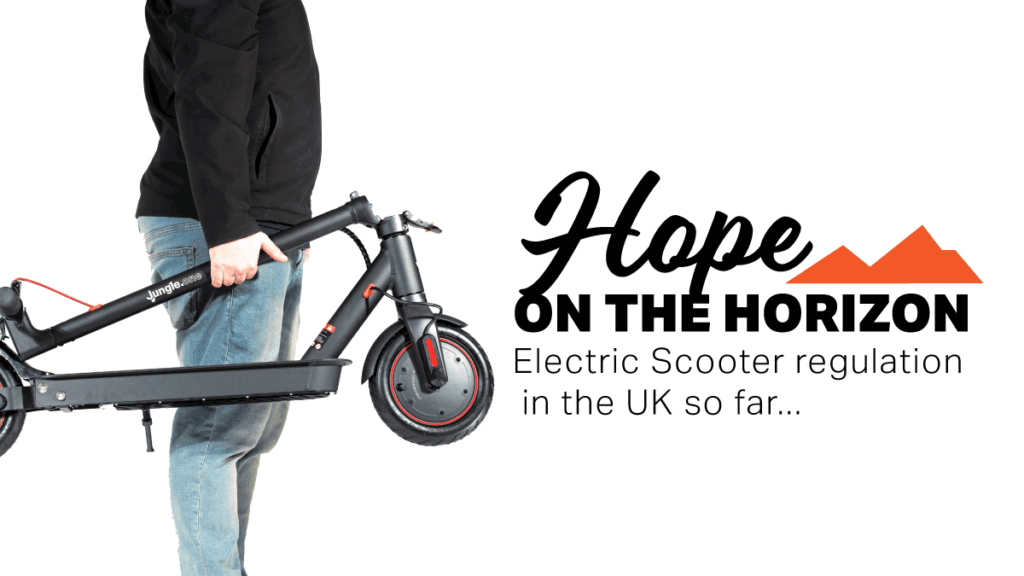
Amidst the peak of the pandemic in July 2020, the UK government gave the green light for e-scooter trials to become legal on our streets. Whizzing forward to Spring 2021, over 30 locations are now on board with trials and hope is on the horizon for more to be announced across the year.
Whilst organised and approved trials are going ahead on public roads and cycle paths, scooters owned for personal use must still only be used on private roads. Not abiding to this can land you six points on your license and up to a £300 fine. But what is the difference between how private scooters are regulated and how public trials are regulated?
Public e-scooter trails have to go through strict procurement processes to be considered safe and appropriate for use. This can involve anything from making sure e-scooters only reach the max speed limit (15.5mph) to deciding the appropriate access points. Government regulations also state that “e-scooters will continue to be classed as motor vehicles” which requires users to hold a provisional or full driving license to operate.
Companies operating public trials have tackled scrutiny as to how they moderate potential driving offences. Speaking to Sky News last month, VOI confirmed that they have introduced “four-digit code licence plates which will identify anyone driving irresponsibly”. In a bid to battle drunk riding VOI also announced that drivers have to pass a reaction test at night, with those who fail being sent a link to a local taxi service.
These procurement processes can suggest why privately owned e-scooters are not yet legal for public use; but according to the Transport Committee they should be. Speaking in a report in October last year, they recommended that private e-scooters should be legalised for use on public roads and that “e-scooters represent an affordable, accessible and eco-friendly alternative to cars.”
Their recommendation, based firmly on data from current rental trials in the UK and overseas, set out a roadmap on how full legalisation could come into play. This included suggestions such as users not requiring a license, speed limits determined by local authorities without a ‘one size fits all’’ approach and encouraging the use of helmets.
The report also challenges The Department for Transport’s decision to not fully legalise privately owned e-scooters on public roads. It calls for sensible frameworks for regulation whilst taking on board the impact on pedestrians and disabled people and how we can overcome these issues. According to Chairman of the committee, Huw Merriman (MP): “Current rental trials provide crucial evidence for future legislation, but in order to learn how e-scooters impact safety, the environment and journey choices the trials need to be accessible to a wide range or people and take place in a variety of different settings.”
It is not just regulation that has to be taken into account for the future of our urban infrastructure, it’s how we adapt current landscapes to accommodate new modes of transport. Transport company Vivacity have been creating solutions for these changes with AI data collection techniques and citywide installations. Their trademark Smart Junctions and AI traffic sensors gather 24 hour data on modes of transport, traffic flow and travel patterns to work around our new way of living.
Demonstrations of their success have been seen especially during the pandemic as people have taken to cycling or walking to avoid public transport. In particular their most recent venture in Cambridge is looking at how traffic can be optimised and air pollution can be reduced using camera-based sensors and machine learning. Commenting on the instalment Claire Ruskin, Executive Board Member for the Greater Cambridge Partnership noted: “We know our traffic lights need to be more intelligent and we are finding new technology solutions that can help the way people make their daily journeys.”
When speaking to Vivacity about their plans for e-scooters, they responded that work is in the pipeline and more will be announced when they roll out plans for the structure of e-scooters.
Summary
As we edge towards the year anniversary of the first e-scooter trial, it seems clear that more needs to be done to regulate and understand how e-scooters can fit amongst our infrastructure. With reports from The Transport Committee, data collection from Vivacity and comments from the Goverment that “in the future following trials, we may look to amend the law to treat e-scooters like EAPC’S” we can really see hope that e-scooters are on their way to making serious progress in the UK, even if it will not exactly be plain skating.
All current government guidelines can be found here: https://www.gov.uk/guidance/e-scooter-trials-guidance-for-users
2 responses to “‘Hope On The Horizon’: E-Scooter Regulation in the UK so far”
I applaud UK’s actions regarding e-scooters. Some places are still far behind and nobody knows when they will progress. Fingers crossed on other countries and looking forward to your future with e-scooters. Thank you for this informative article!
It’s a shame our government drag their heels over private Escooters, I for one have owned and licensed motorbikes in the past, so climbing aboard an escooter for me feels no different, and I observe the rules of the road as if I was on a motorbike.
Where I am with certain medical conditions, an escooter makes my life much easier, able to hold a job down, and fundamentally help save our planet by not running a diesel van to and from work, choking up the roads, difficulty parking and annoying neighbours by parking outside (legally) on the road overlooking their house front.